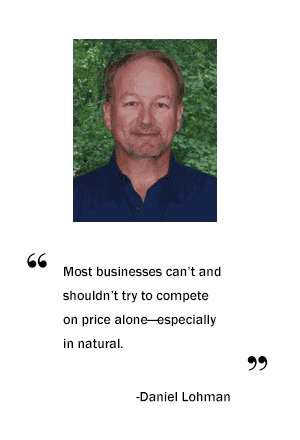Know your retail pricing strategy

 Pricing strategies are perhaps one of the most sensitive and overanalyzed issues throughout the entire CPG industry.
Pricing strategies are perhaps one of the most sensitive and overanalyzed issues throughout the entire CPG industry.
Pricing items too high might scare consumers away, while pricing products too low might cause shoppers to question value or worth. Finding an optimal price point for each and every item can be a daunting task. It is a lot more complex than just matching the competition on every item across the board, especially when your competition might be able to price that item for less simply because they better control their costs (labor, inventory, rent, advertising, etc.).
So what is the ultimate pricing strategy?
Primary pricing strategies: EDLP and Hi-Lo.
EDLP (every day low price) is the strategy Walmart uses. Price is the cornerstone of all of its communications. The mega-retailer can do this well because of its efficiencies and sale (reach). Most businesses can’t and shouldn’t try to compete on price alone—especially in natural. While you need to remain competitive on the best-selling items in every category, you do not need to give away margin on items only you sell.
Hi-Lo (high-low) is the other primary pricing strategy, and the most familiar. Retailers have a regular price and a sale price. They adjust pricing to create excitement around target items. This can be quite effective if managed properly.
Other retail pricing strategies
There are many variations on these two strategies depending on which expert you consult. Some include cost plus (cost plus a percentage/margin), BOGO (buy one get one), multiple pricing (buy several get one—buy three get one), loss leaders (selling certain items for no additional margin to increase foot traffic), bottom line pricing (our lowest price), etc. These are all variations of EDLP and hi-lo.
There are certain items in each category that should form a competitive set—a group of competitively priced items that can be purchased at your competition. These items communicate a good selection with fair pricing for your customers. This strategy addresses shopper perception and how your store meets customer needs. This is what gets them to continually come into your store and hopefully fill their entire shopping basket with the things they need.
Natural is unique in that we specialize in unique products not found in every store. Our focus is on authentic items that address specific customer needs such as gluten and allergen free, non-GMO, sustainable, free range/cage free, vegan, organic, etc. These items are not mass produced on the scale of items found at most larger mainstream retailers.

What pricing strategy works best for you?
They should not be priced the same as high-profile items. Their value is in how well they fill a specific niche and should command a premium price as a result. This does not mean an exorbitant price. It means a fair price for the value they promise. Consumers will pay a little more for quality, sustainability, functionality and value. This is the competitive advantage natural has in the CPG industry.
About the Author
You May Also Like



